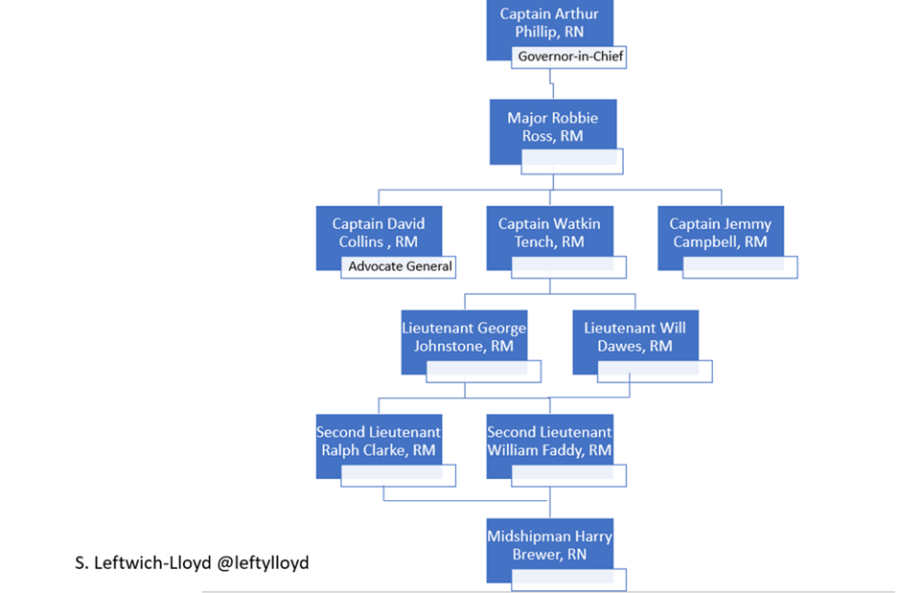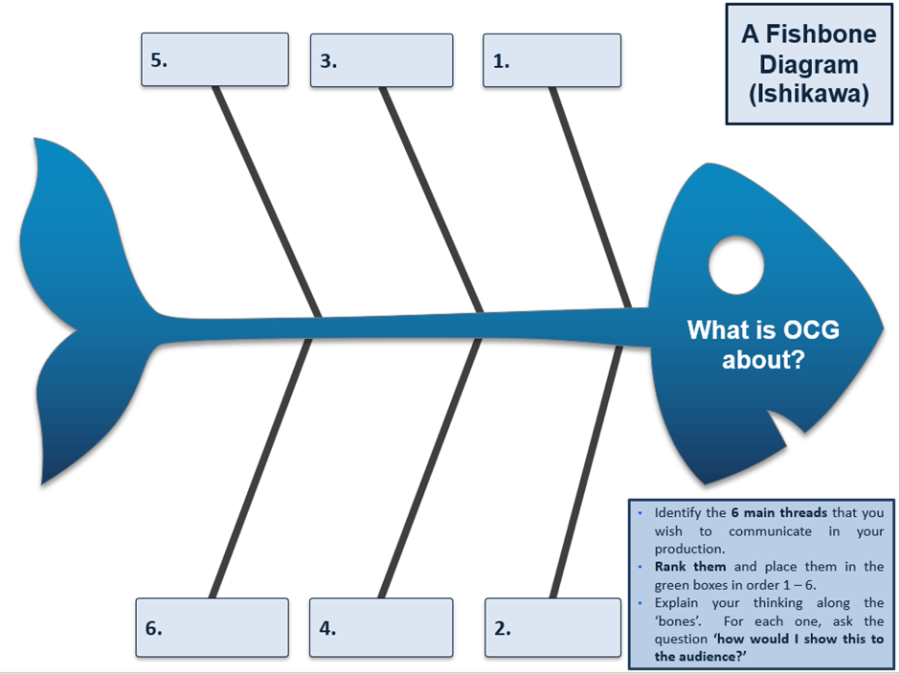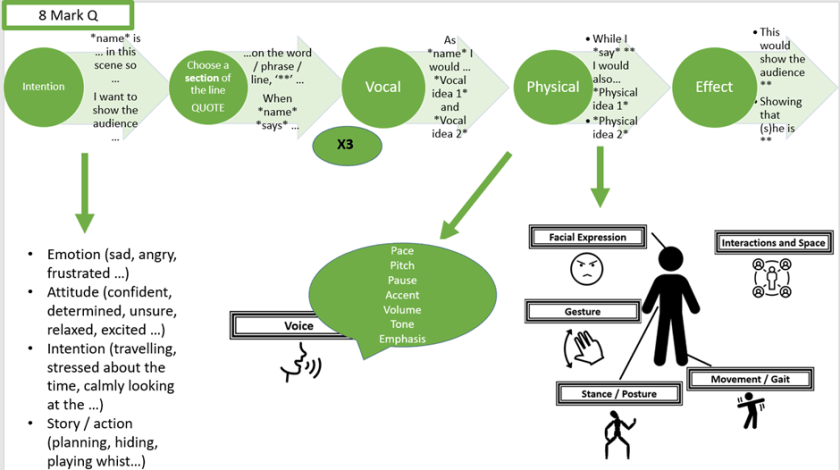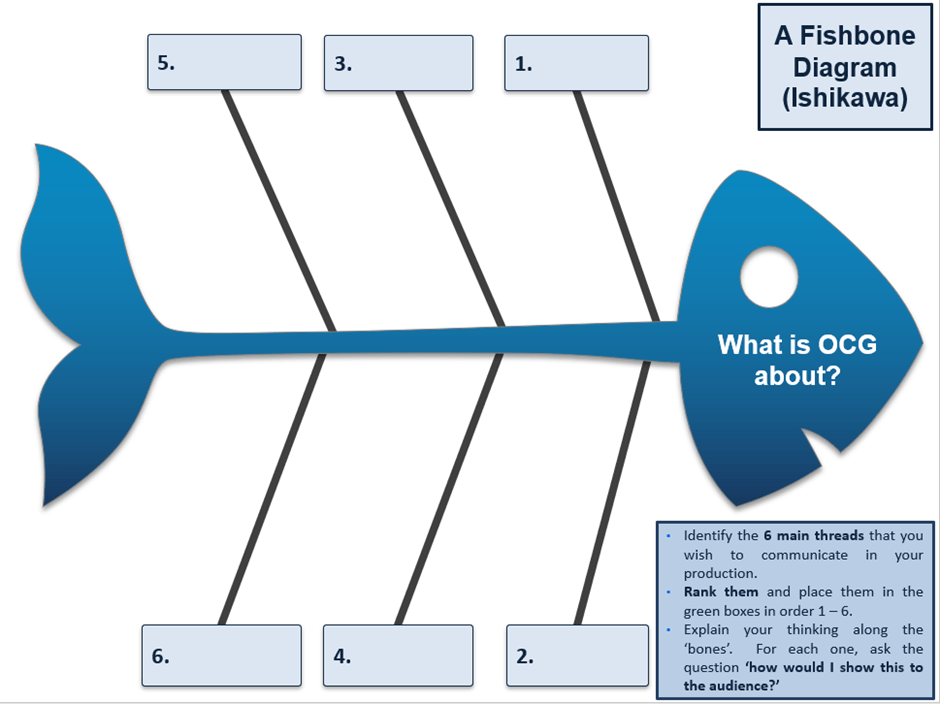This blog is based on an article first published in “National Drama” magazine.
Introduction - My Journey
I have been experimenting with graphical representations of concepts for many years; I’ve found that diagrammatic representations of processes (or the relationship between concepts) enables students to follow and replicate these processes with greater ease and success. I did not, however, fully understand why.
A (very short) Summary of the Research - Word Diagrams
I have been using graphic organisers to reduce chunks of text and make material easier to understand and /or to create revision summaries for many years. Following my engagement with the work of Caviglioli, I have used them more and more. Examples of word diagram formats are:
- Fishbone
- Flow spray
- Flow Chart
- Tree diagram
- Concept map
We find a photograph or drawing easier to remember than a written description; a timeline easier to understand than a paragraph of text explaining the order of things; a hierarchical representation is clearer than an extensive explanation. Caviglioli’s second book (2021) written in collaboration with David Goodwin explains this though the concept of “spatial metaphors” (Caviglioli & Goodwin, 2021:24-25). The book draws on the research of Lakoff and Johnson who state, “we typically conceptualise the nonphysical in terms of the physical” either creating “containers” in which concepts can be placed within others or “paths” in which we “move towards an intended goal” (Caviglioli & Goodwin, 2021:25). Both of these are embedded within us and this “can help us better understand why visual structures enable us to think clearly.” (Caviglioli & Goodwin, 2021:24).
The concept of “cognitive maps” is also explored, “neuroscience is revealing surprising aspects of how our cognitive maps mirror the mechanisms of how we navigate physical space” (Caviglioli & Goodwin, 2021:26). We naturally create a layout on a page and use space to plan our thoughts and actions. Word diagrams work on this very concept that laying ideas and concepts in carefully considered spatial formations aids our ability to engage with and think about ideas.
Practical Applications for GCSE Drama
I have seen a growth in the number of students opting for non-acting pathways in GCSE Drama over the last 6-7 years. Having a multitude of foci in the practical classroom became quite stressful for a time so I wrote booklets which gave students clear processes to follow and provided carefully sequenced tasks to complete during the devising process. On the front cover, alongside the appropriate ‘drama 6’ icons, I provide students with a simple flow chart to follow / annotate / tick off as they progress through their work. These have increased student independence and ensure that no critical steps are missed. Here is an example from the set design booklet:

Hierarchical relationships are critical in many texts, not least in Wertenbaker’s ‘Our Country’s Good’. Providing a graphic visual of the officer characters made a huge difference to students’ understanding which was instant upon seeing this tree diagram representation:

We experiment with this clear, accessible structure throughout our study of the text providing graphic representations of the more fluid convict hierarchies in key scenes for discussion and debate.
I also use the Ishikawa or fishbone diagram to help students to develop their directorial vision for ‘Our Country’s good’. The example below is adapted from the work of Karen Knight (@KKNTeachLearn) who has kindly given her permission for me to share my version:

Students complete this diagram after studying the whole play, often changing their minds before arriving at their finalised version which they then place beside them when writing ‘director’ questions to reduce their cognitive load, guide their thinking and develop and link their ideas.
I am an advocate of reducing cognitive load as much as possible when in the early stages of learning the skill of answering examination questions, I have therefore created flow spray diagrams for both GCSE and A level to support students in the early stages. I make links to key knowledge which is needed alongside giving them some support with writing structures, which they can use if they need to. These are used as scaffolding, so versions with less and less information are provided, before they are removed completely. Here is an example for the AQA GCSE 8 mark question:

Word Diagram Top Tips
My top tips for utilising word diagrams are:
- Use them when there is a clear relationship between elements which could easily be represented in a diagram.
- Use them to support students when studying a play or text with key relationships.
- Use them to scaffold complex tasks and then gradually remove.
References
Caviglioli, O (2022) Olicav [available online] https://www.olicav.com/ (accessed, 15/10/22)
Caviglioli, O & Goodwin, D (2021) Organise Ideas, John Catt
Exploring your mind (2020) John Sweller’s Cognitive Load Theory [available online] https://exploringyourmind.com/john-swellers-cognitive-load-theory/ (accessed 15/10/22)
Noun Project (2022) The Noun Project [available online] https://thenounproject.com/ (accessed, 15/10/22)
Wertenbaker, T (1995) Our Country’s Good, Bloomsbury

Sharon Leftwich-Lloyd (@leftylloyd) is Lead Practitioner and Drama Lead at The Polesworth School, Warwickshire and also leader of the Community Academies Trust Expert Group for Secondary Literacy, Reading and Numeracy. She favours a research / evidence led approach to teaching and is a Fellow of The Chartered College of Teaching.


